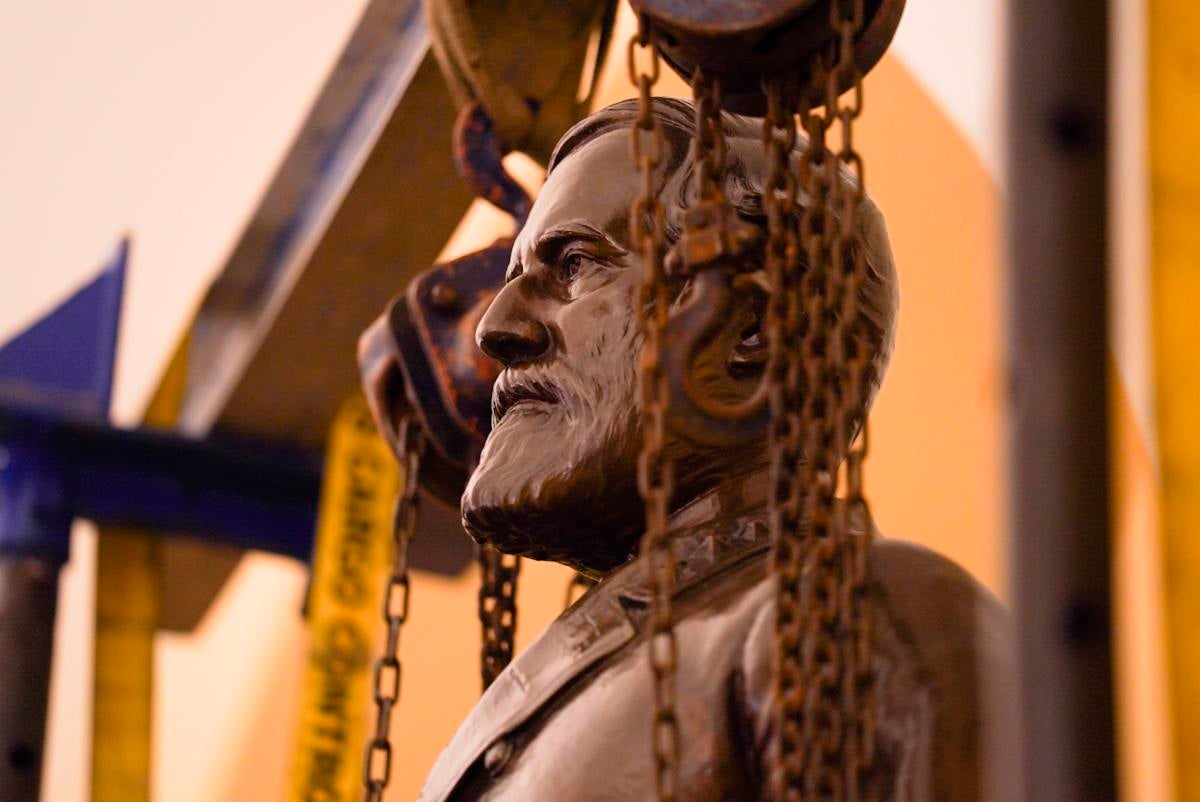Virginia's Lee statue has been removed from the US Capitol
A statue of Confederate Gen. Robert E

Your support helps us to tell the story
From reproductive rights to climate change to Big Tech, The Independent is on the ground when the story is developing. Whether it's investigating the financials of Elon Musk's pro-Trump PAC or producing our latest documentary, 'The A Word', which shines a light on the American women fighting for reproductive rights, we know how important it is to parse out the facts from the messaging.
At such a critical moment in US history, we need reporters on the ground. Your donation allows us to keep sending journalists to speak to both sides of the story.
The Independent is trusted by Americans across the entire political spectrum. And unlike many other quality news outlets, we choose not to lock Americans out of our reporting and analysis with paywalls. We believe quality journalism should be available to everyone, paid for by those who can afford it.
Your support makes all the difference.A statue of Confederate Gen. Robert E. Lee that has represented Virginia in the U.S. Capitol for 111 years has been removed.
Virginia Gov. Ralph Northam said in a statement that workers removed the statue from the National Statuary Hall Collection early Monday morning.
Northam had requested the removal and a state commission decided that Lee was not a fitting symbol for the state.
Lee's statue had stood with George Washington's statue since 1909 as Virginia’s representatives in the Capitol. Every state gets two statues.
The state commission has recommended replacing Lee's statue with a statue of Barbara Johns. She protested conditions at her all-Black high school in the town of Farmville in 1951. Her court case became part of the landmark Brown v. Board of Education decision by the U.S. Supreme Court. The ruling had struck down racial segregation in public schools.
Confederate monuments have reemerged as a national flash point since the death of George Floyd a Black man who died after a white Minneapolis officer pressed his knee into his neck for several minutes. Protesters decrying racism have targeted Confederate monuments in multiple cities, and some have been taken down.
“The Confederacy is a symbol of Virginia’s racist and divisive history, and it is past time we tell our story with images of perseverance, diversity, and inclusion," Northam said in a statement.
The Democratic governor added: "I look forward to seeing a trailblazing young woman of color represent Virginia in the U.S. Capitol, where visitors will learn about Barbara Johns’ contributions to America and be empowered to create positive change in their communities just like she did.”
U.S. House Speaker Nancy Pelosi also hailed the removal, saying in a statement there "is no room for celebrating the bigotry of the Confederacy in the Capitol or any other place of honor in our country.”
The presence of statues of generals and other figures of the Confederacy in Capitol locations such as Statuary Hall — the original House chamber — has been offensive to African American lawmakers for many years. Former Rep. Jesse Jackson Jr., an Illinois Democrat, was known to give tours pointing out the numerous statues.
But it’s up to the states to determine which of their historical figures to display. Jefferson Davis, a former U.S. senator from Mississippi who was president of the Confederate States of America, is represented by one of two statues from that state.
Pelosi, a Democrat from California, noted in June that Davis and Confederate Vice President Alexander Stephens, whose statue comes from Georgia, “were charged with treason against the United States.”